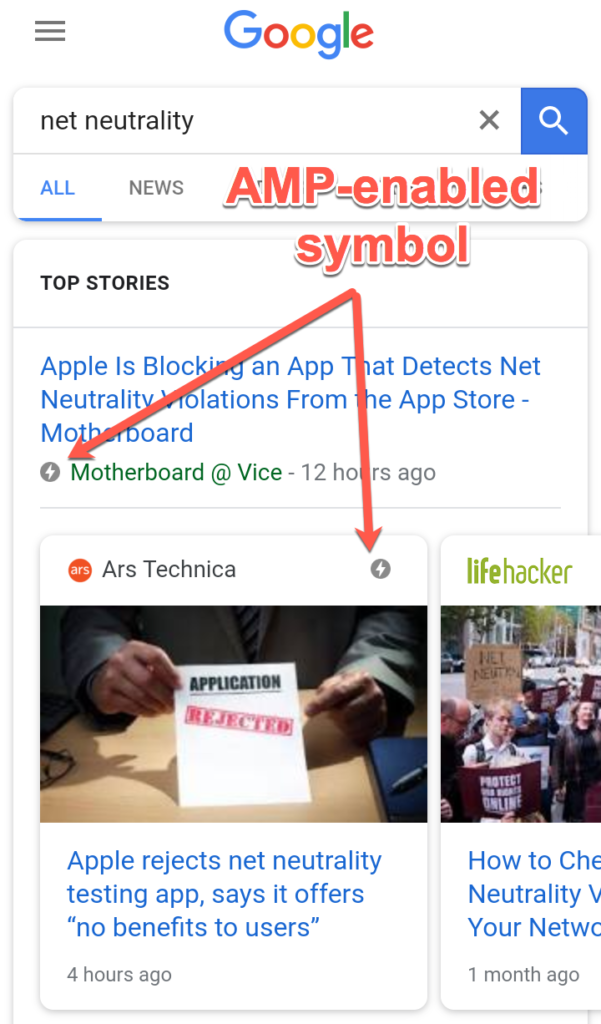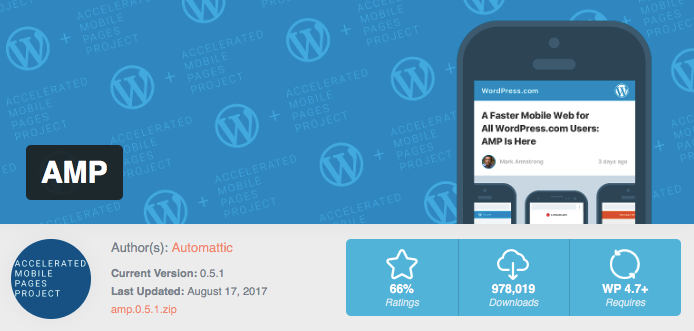This article was created in partnership with Elevation Marketing. Thank you for supporting the partners who make SitePoint possible.
Just about a year ago, Google introduced a technology that rocked mobile SEO called AMP.
If you’re unfamiliar with the term, AMP stands for Accelerated Mobile Project. With AMP technology, Google wants to drive faster mobile page loading, especially for those users still stuck on 3G speeds. Google uses AMP to ensure that they’re still able to view the content they’re searching for as fast as possible.
Why AMP Matters
Naturally, when Google releases updates like this, the end goal is to ensure that the maximum number of websites possible are using the technology. Otherwise it would be a waste to spend millions in research and development to develop the overall functionality.
The way Google encourages AMP use is by reserving premium real estate in the search results for AMP-enabled websites — particularly for any searches related to news or blog-type pieces. Take a look at the screenshots below as an example:

As you can see in the screenshot, these card-like results are all AMP-enabled sites. Your site will not show up in this section of the results unless it is AMP optimized. If you’re trying to rank for any keywords where these card snippets are used in the SERPs, you’re missing out if you don’t use AMP. The cards are given premium real estate in the mobile internet world.
Even for those searches that don’t use AMP-optimized card snippets, whether or not you’re using accelerated mobile pages is still a factor. In fact, the lightning AMP symbol pointed out in the screenshot above will still appear next to the links.

Does AMP Affect Search Engine Optimization?
AMP’s effect on SEO strategy is still unclear. At the Search Engine Journal Summit in mid-2016, Gary Illyes, who holds the title of Webmaster Trends Analyst at Google, announced that "currently, AMP is not a ranking signal."
Of course, given Google’s constant evolution of their search algorithm and Gary’s use of the word "currently," it’s hard to bank on the idea that Google hasn’t yet incorporated it into the search algorithm. When you consider that a significant percentage of the websites that make it to the first page of results are AMP enabled, you have to wonder about the strong correlation.
However, even if AMP isn’t a ranking signal, it’s still a signal to users who search on mobile. When they see that little lightning icon next to your link, they recognize that the page will load near-instantaneously, and may decide to head to your website rather than clicking on a higher-ranking link that doesn’t use AMP.
So regardless of whether or not AMP affects SEO, it will still net you a positive effect in the SERPs.
How to Add Google AMP to Your WordPress Website
With WordPress websites, setting up support for Google AMP is a smooth and easy process. There’s virtually zero backend work or coding that you have to do on your own. The process is in fact so easy that the balance vs. results is too far in your favor for you to ignore.
Automattic, the team behind WordPress, has developed a plugin for this process named simply AMP.

However, this plugin has received poor ratings for errant functionality and frequent issues, despite having come from the big boss of WordPress. Instead, most marketing professionals, myself included, would recommend AMP for WP. It was created by an independent developer, but is far more popular with its users and has received much better ratings.
Continue reading %Google AMP & WordPress: Everything You Need to Know%
by Ryan Gould via SitePoint
No comments:
Post a Comment